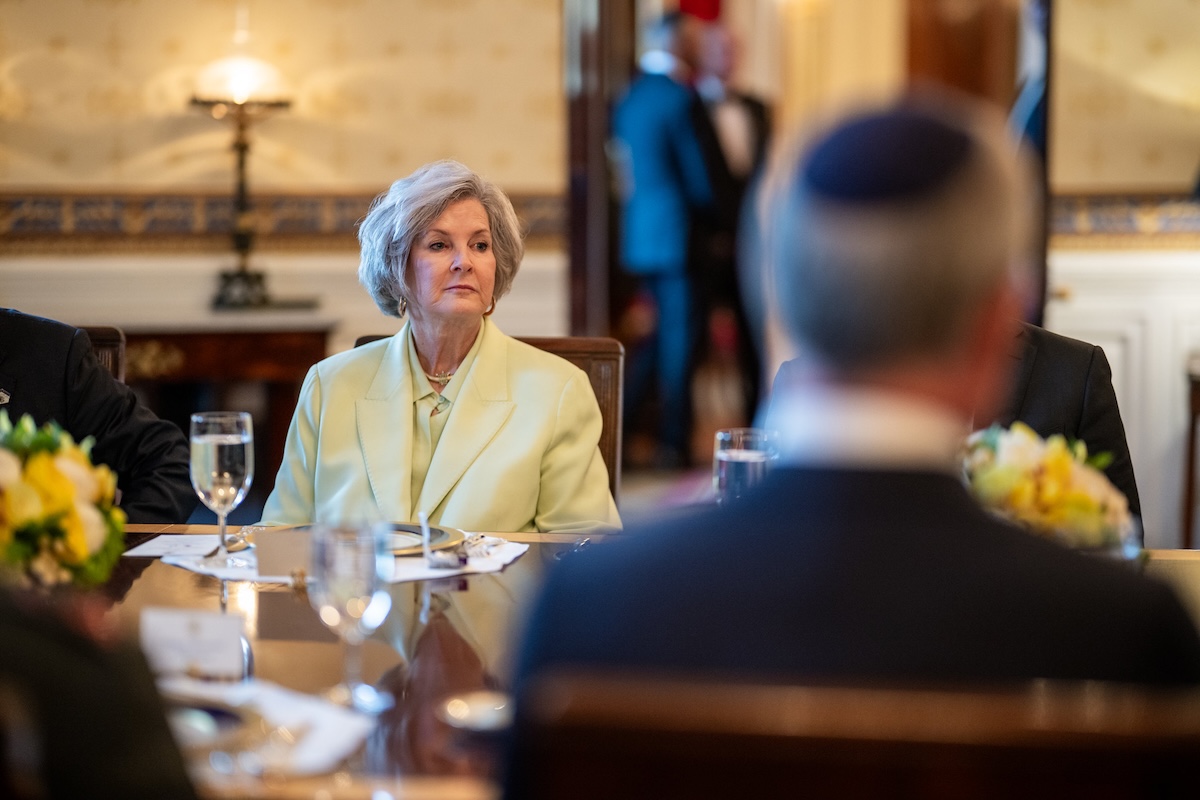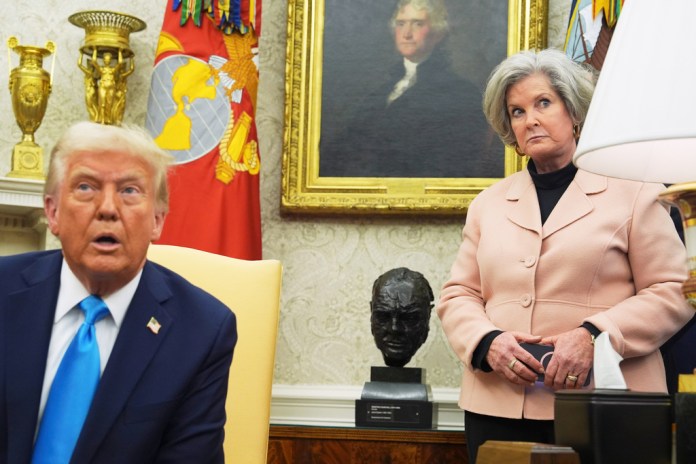Montana’s raging housing market becomes flashpoint in key Senate race – Washington Examiner
The housing crisis in Montana has become a focal point in the contentious Senate race between Democratic Sen. Jon Tester and Republican challenger Tim Sheehy. Housing prices have surged dramatically, with median home prices climbing 105% since 2017 to around $524,000, making it unaffordable for most residents. Less than 20% of households can afford a median home, exacerbating the issue with the state’s population influx and labor shortages.
Political candidates are using the housing issue to attack each other, with Tester blaming out-of-state buyers and “rich folks” for driving up prices, while Sheehy attributes it to broader national policies and inflation. Both have suggested solutions: Tester proposed tax credits for first-time homebuyers, while Sheehy attributed the problem to external factors, distancing himself from the blame.
The narrative surrounding the housing market is further complicated by external factors, such as the impact of the popular TV show “Yellowstone,” which has fueled interest in the state, leading to more demand for housing. Experts indicate that the state needs to increase housing supply and streamline building processes to effectively address the crisis. Additionally, discussions about federal public land management have emerged, highlighting differing views on its potential role in housing solutions.
Montana’s housing market dynamics are central not only to the Senate race but also to the daily lives of its residents facing escalating living costs.
Montana’s raging housing market takes center stage in pivotal Senate race
BOZEMAN, Montana — Surging housing prices have become a political flashpoint in Montana‘s hotly contested Senate race as residents increasingly find the prospect of owning or renting in the state out of reach.
Sen. Jon Tester (D-MT) and Republican Tim Sheehy have hurled nonstop insults and accusations at one another on housing affordability in a matchup in which the victor could be the chamber’s majority maker.
The subject has saddled voters across the country with higher costs and presented a drag on the economy, leading the matter to bubble up as a point of contention between Vice President Kamala Harris and former President Donald Trump.
In Montana, it’s been acutely felt, thanks to an influx of residents mixed with a labor shortage.
“The issue of housing is significant, and it doesn’t matter where you live in Montana,” said Democratic state Rep. Paul Tuss, who is seeking reelection in a Republican-leaning district. “There seems to be a housing crisis in every corner of the state.”
‘We need to get housing under control’
Median state home prices exceed that at the national level, increasing 105% since 2017 and peaking in 2023 around $524,000, according to the Montana Department of Commerce. Less than 20% of Montana households can afford a median home. Nationally, prices have seen a more than 50% uptick since 2019 to a median cost of about $425,000 in 2023.
Montana had about 1.13 million residents as of last year, a growth of about 48,600 since the 2020 census. The figures may seem insignificant, but the state’s housing supply has failed to keep pace with roughly one home for every 3.7 new residents. There were 527,800 housing units as of last year, or one for every 2.1 residents.
“The average house in Bozeman is $755,000. The average worker in Bozeman, Montana, makes $56,000 a year. There’s a problem there,” a woman lamented during a town hall with Ryan Busse, the Democratic challenger to Gov. Greg Gianforte (R-MT). “We need to get housing under control.”
Busse’s lieutenant governor running mate, Raph Graybill, recalled a prior legal case he handled as an attorney in which West Yellowstone firefighters were required to live within 1.5 hours of the station but could not afford to do so on their salary, with single-family home prices exceeding $750,000.
Sheehy, a former Navy SEAL and Montana business owner, blamed housing prices on “the four Is”: inflation, interest rates, inventory, and illegal immigration. And, of course, Tester, for supporting “disastrous policies” of the Biden administration.
“People talk about housing affordability all over the country. This isn’t a Montana issue. It’s a false narrative we see from Tester and Ryan [Busse] running for governor, and others,” Sheehy told the Washington Examiner. “That’s the consequence of these terrible policies coming out of Biden-Harris that have driven up inflation, driven up interest rates.”
Tester points the finger at rich out-of-staters and figures like Sheehy, the CEO of aerial firefighting company Bridger Aerospace. He is originally from Wisconsin and would be one of the wealthiest members of Congress with a net worth in the tens of millions.
“We’ve seen ordinary Montanans not be able to afford to get into a home,” Tester said at a recent debate before nodding in Sheehy’s direction. “It’s caused by people who have hundreds of millions of dollars that come to this state and buying home after home after home. It’s caused by hedge fund folks coming in, buying homes, and kicking Montanans out.”
Tester has proposed a $15,000 tax credit for first-time homebuyers and credits for builders.
Sheehy rejected the assertions from Tester and other Democrats that people like him are to blame.
“His attempt to cast it on me and people who have moved here from out of state is just wrong,” he told the Washington Examiner during a campaign stop.
Hit show Yellowstone is partly to blame
In reality, housing industry experts say Montana’s affordability “crisis” extends far beyond one senator’s power or one wealthy businessman.
The pandemic, lower interest rates, and the state’s ample opportunities to trade city life for the great outdoors were all driving factors that “fueled” an influx of new residents from wealthier areas like California, Oregon, Washington state, and even as far as Florida and New York.
In a bit of irony, the hit TV series Yellowstone is viewed as another major contributing factor. The Montana-based drama centers on a longtime rancher’s fight to protect his vast sprawl of multigenerational land from developers amid a booming population growth.
“Yellowstone portrayed a place that’s fairly accurate because it’s really beautiful here,” said Bryan Atwell, broker and owner at Bozeman-based Realty ONE Group Peak. “People wanting to come here from highly populated places definitely lit the match for price increases on properties.”
It comes down to a basic supply and demand issue, experts say, but the diagnosis is easier than the cure.
“We need more housing, and there needs to be an easier path to provide more housing,” said John Barkow, CFO of Bozeman-based OSM Construction. “That’s the only way you’re going to really make an impact on lowering housing costs.”
Barkow credited Bozeman city officials with providing higher-density zoning and simplifying the building permit process.
Still, the Southwest Montana Building Industry Association, the region’s trade organization for commercial and residential building companies, wants to see more done quicker to slash red tape. Building costs for its member companies have skyrocketed by more than double, from $180 per square foot in Bozeman in 2019 to nearly $400, creating a ripple effect across the economy.
“We’re in a housing crisis, and so we need to be thinking about ways that we can not overregulate,” said SMBIA Government Affairs Chairman Riley Rivers, whose local chapter has not made a race endorsement but whose national parent group is backing Sheehy. “We’re going to work with whoever’s going to be there to make sure that we can really get the changes needed.”
How public lands are being ‘politicized’
The federal protection of public lands, coveted in Montana, has been brought into the political conversation as a possible fix for housing in Western states but less so in the Treasure State. It has been used by Tester to pummel Sheehy for previous statements supporting federal land transfers to local control. Sheehy says he opposes selling off or privatizing the land, roughly 35% of which is owned by the federal government.
“Public lands belong to you, the public,” Sheehy told supporters at his rally. “In the last 30 years … radical environmental legal groups and bureaucrats in Washington, D.C., have taken those public lands, and they said, ‘They’re ours.’”
During their debate, Tester charged Sheehy with having “made an incredible transformation on this issue.” Sheehy serves on the board of a property rights and environmental research nonprofit group that, decades ago, advocated the privatization of public lands, a position it said it no longer supports.
“When he first started running, he said that public lands should be turned over to either his rich buddies or the counties, remove protection,” Tester said. “Bad idea.”
The presidential race has also shined a spotlight on the contentious issue and created strange bedfellows. Harris and Trump have shown support for repurposing federal lands for housing.
At the vice presidential debate, Sen. J.D. Vance (R-OH) stood firm.
“They could be places where we build a lot of housing,” he said. “We have a lot of land that could be used. We have a lot of Americans that need homes.”
Montana’s housing industry is skeptical, to say the least. Relinquishing federal control over areas used for recreational activities by residents and tourists is unpopular with locals, and the territories in Montana are largely unsuitable for homes.
“I’ve never seen public lands being sold in order to create residential housing,” said Atwell, the Bozeman-based realty broker. “I think it’s being more politicized than it is an actual deal.”
" Conservative News Daily does not always share or support the views and opinions expressed here; they are just those of the writer."




